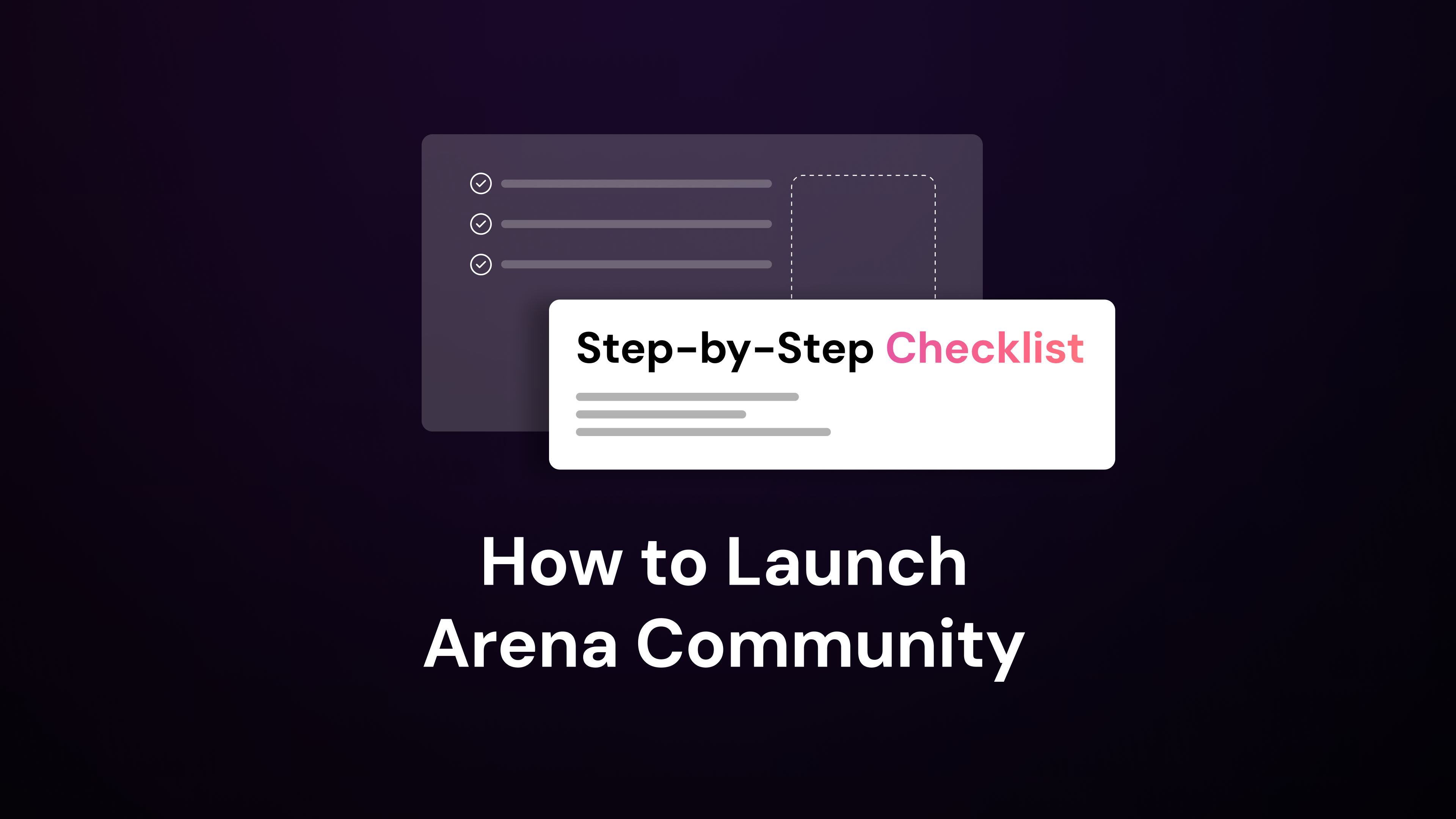Building a community isn’t just a buzzword for non-profits in 2024. It’s a strategy that can transform how you engage with supporters and achieve your mission. Understanding the benefits of a strong community can help you make informed decisions about your organization’s future.
How can a community impact your non-profit’s effectiveness? The answer lies in deeper connections, enhanced fundraising, and improved program delivery.
Let’s explore the specific benefits of non-profit community building.
What are the Benefits of Non-Profit Community Building?
Increased Supporter Engagement
Building a community fosters deeper connections with donors, volunteers, and beneficiaries. When people feel part of a community, they are more likely to engage actively. Learn how to grow engagement with a virtual community to keep your supporters actively involved. This engagement can manifest in various ways, from attending events to participating in discussions and providing valuable feedback. These interactions create a sense of belonging and commitment, making supporters feel more invested in your cause.
Enhanced Fundraising Opportunities
A loyal community of supporters is more likely to donate consistently. Understanding the importance of customer engagement can help you enhance your fundraising strategies. When people feel connected to your mission and see the impact of their contributions, they are more inclined to give. Community members who believe in your cause can also become advocates, encouraging others to donate. This network effect can significantly boost your fundraising efforts, providing a stable financial base for your programs.
Improved Program Effectiveness
Community feedback plays a crucial role in refining your service delivery. Engaged supporters can provide insights into what works and what doesn’t, helping you tailor your programs to better meet the needs of your beneficiaries. This feedback loop ensures that your initiatives remain relevant and effective, leading to better outcomes for the people you serve.
Greater Brand Awareness
Word-of-mouth marketing from engaged supporters can significantly increase your brand’s visibility. When community members share their positive experiences with others, it enhances your organization’s reputation and attracts new supporters. This organic growth can lead to more volunteers, donors, and partners, amplifying your impact without the need for extensive marketing campaigns.

How to Build a Non-Profit Community in 2024
You might wonder where to start or how to make your efforts sustainable. Building a community is an ongoing process that requires thoughtful planning and execution.
Define Your Community’s Purpose
Start by defining your community’s purpose. This purpose should align with your organization’s mission and values. Clearly articulate why the community exists and what it aims to achieve. This clarity helps attract like-minded individuals who share your goals and are more likely to engage meaningfully. Ensure every member understands the community’s objectives and how they contribute to the larger mission. Discover how to build a community flywheel for sustained growth and engagement.
Identify and Engage Key Stakeholders
Identify the key stakeholders who will form the backbone of your community. These include donors, volunteers, beneficiaries, and partners. Each group brings unique perspectives and resources. Engage them by understanding their needs and motivations. Regular communication and involvement in decision-making processes can foster a sense of ownership and commitment. Personalize your interactions to make each stakeholder feel valued and integral to the community’s success.
Create Opportunities for Meaningful Interaction
To keep your community vibrant, offer various opportunities for meaningful interaction. Organize events, forums, and volunteer programs where members can connect and collaborate. These interactions should be purposeful, fostering a sense of camaraderie and shared achievement. Whether it’s a virtual town hall, a local meet-up, or a collaborative project, these activities can strengthen bonds and enhance the overall sense of community.
Leverage Technology for Community Engagement
Use technology to facilitate and enhance community engagement. Social media platforms, online forums, and mobile apps can help you reach a wider audience and provide convenient ways for members to interact. These tools allow for real-time communication and can host various forms of content, such as videos, articles, and live streams. Ensure that your digital platforms are user-friendly and accessible to all community members. Learn more about building thriving online communities to enhance your engagement efforts.
Measure and Refine Your Community Building Efforts
Track engagement metrics regularly to understand how well your community-building efforts are working. Metrics such as participation rates, feedback scores, and interaction levels can provide insights into what is working and what needs improvement. Gather feedback from community members to identify areas for enhancement. Use this data to refine your strategies, ensuring your community remains dynamic and responsive to its members’ needs.
What are the Trends in Non-Profit Community Building in 2024?
Keeping up with trends can help you stay ahead and make informed decisions. So, what’s new and noteworthy in 2024?
Emphasis on Diversity, Equity, and Inclusion
In 2024, non-profits strongly focus on diversity, equity, and inclusion (DEI). This trend reflects a commitment to creating communities where everyone feels valued and respected. Non-profits actively ensure their communities represent various backgrounds, experiences, and perspectives. This involves not only recruiting diverse members but also fostering an environment where all voices are heard and appreciated. Implementing DEI initiatives helps build trust and strengthens the community by making it more inclusive and reflective of the broader society.
Growth of Online and Hybrid Engagement Models
The rise of online and hybrid engagement models continues to transform how non-profits interact with their communities. The latest customer engagement trends help enhance engagement strategies. Virtual events, webinars, and online forums offer flexible and accessible ways for members to participate, regardless of location. Hybrid models, which combine in-person and online elements, provide the best of both worlds. They allow for face-to-face interaction while reaching a wider audience through digital channels. This approach not only increases participation but also ensures that community members can stay connected and engaged, even if they can’t attend in person.
Increased Focus on Mental Health and Well-Being
Nonprofits recognize the importance of mental health and well-being within their communities. In 2024, there will be heightened awareness of the need to support the mental and emotional health of both staff and community members. This involves offering resources such as counseling services, mental health workshops, and peer support groups. By prioritizing mental health, non-profits create a supportive environment that fosters resilience and well-being. This focus helps individuals feel more connected and valued, strengthening the community.
Collaborations with Corporate Partners for Greater Impact
Collaborations with corporate partners become increasingly common in 2024. These partnerships provide non-profits with additional resources, expertise, and reach. Corporate partners can offer financial support, volunteer manpower, and access to new networks. In return, non-profits provide opportunities for corporations to engage in meaningful social responsibility initiatives. These collaborations often result in innovative programs and initiatives that have a greater impact than either organization could achieve alone. By working together, non-profits and corporate partners can address complex social issues more effectively and create lasting change.
How can Non-Profits Leverage Partnerships for Community Building?
Leveraging partnerships can be a game-changer, but how do you get started?
Identify Potential Partners
To build a robust community, start by identifying potential partners. Look for other non-profits that share similar goals or serve complementary needs. Businesses can also be valuable partners, offering resources and expertise that align with your mission. Government agencies often have programs and funding opportunities that can support your initiatives. By collaborating with these entities, you can pool resources, share knowledge, and amplify your impact.
Define Mutual Benefits and Objectives
Once you identify potential partners, define the mutual benefits and objectives of the partnership. Clearly outline how each party will benefit from the collaboration. Align your goals, resources, and target audiences to ensure everyone works towards the same outcomes. This alignment helps create a strong foundation for the partnership, making it easier to coordinate efforts and achieve shared goals. Understanding customer vs audience engagement strategies can help you define mutual benefits and objectives effectively.
Establish Clear Roles and Responsibilities
Establish clear roles and responsibilities for each partner. Outline what each party will contribute, including resources, expertise, and time. Set expectations for the partnership’s operation, including decision-making processes and communication protocols. Define timelines for key activities and milestones. This clarity helps prevent misunderstandings and ensures everyone knows what is expected of them, leading to a more effective and efficient collaboration.
Regularly Communicate and Evaluate Progress
Regular communication is vital for maintaining a successful partnership. Share updates on progress, challenges, and successes. Use these updates to measure the impact of your efforts and make any necessary adjustments. Regularly evaluate the partnership to ensure it meets its objectives and provides value to all parties. This ongoing evaluation helps keep the partnership on track and allows continuous improvement.
What are the Essential Elements of a Strong Non-Profit Community?
To sustain and grow your community, you need to focus on a few key elements.
Shared Purpose and Values
A strong non-profit community starts with a shared purpose and values. Everyone involved, from donors to volunteers, should understand and align with the mission. This common ground creates a unified direction and fosters a sense of belonging. When members see their personal values reflected in the organization’s goals, they feel more connected and committed. This alignment drives collective action and helps maintain focus on the mission.
Open and Transparent Communication
Open and transparent communication is vital for building trust within your community. Regular updates on activities, decisions, and outcomes keep everyone informed and engaged. Transparency about challenges and successes fosters a culture of honesty and accountability. Encourage feedback and be responsive to questions and concerns. This two-way communication ensures members feel heard and valued, strengthening their connection to the organization.
Opportunities for Meaningful Participation
Providing opportunities for meaningful participation keeps community members actively involved. Learning how to optimize funnel conversions can create more meaningful participation opportunities. This can include volunteering, attending events, or contributing ideas. Meaningful participation allows members to see the direct impact of their involvement, which enhances their sense of purpose. Create diverse opportunities that cater to different interests and skills. This inclusivity ensures that everyone can find a way to contribute that feels significant to them.
Inclusive and Welcoming Environment
An inclusive and welcoming environment ensures that all members feel respected and valued. Diversity in backgrounds, perspectives, and experiences enriches the community and fosters innovation. Promote inclusivity by actively inviting participation from underrepresented groups and ensuring that all voices are heard. This approach strengthens the community and enhances the organization’s ability to address a broader range of issues effectively.
Celebration of Successes and Milestones
Celebrating successes and milestones reinforces the community’s achievements and boosts morale. Recognize individual and collective accomplishments to show appreciation for everyone’s efforts. Celebrations can take many forms, from public acknowledgments to special events. These moments of recognition motivate members to stay engaged and continue contributing. Highlighting progress also provides tangible evidence of the community’s impact, which can attract new supporters and sustain momentum.
How can Non-Profits Sustain and Grow Their Communities?
Ensuring the longevity of your community efforts is just as important as the initial build.
Continuously Engage and Listen to Community Members
Regular engagement with your community members keeps the connection strong. Refer to the ultimate guide to audience engagement for best practices on continuous engagement. Conduct check-ins to understand their experiences and gather insights. Surveys can help you collect structured feedback on specific aspects of your programs and initiatives. Feedback sessions, whether virtual or in-person, provide a platform for open dialogue. These interactions show that you value their opinions and are committed to improving based on their input. This ongoing communication fosters trust and loyalty, making members feel integral to the community.
Adapt to Changing Needs and Preferences
Flexibility is key to staying relevant. Monitor trends and listen to your community to understand their evolving needs and preferences. Update your programs and communication channels accordingly. If your members prefer digital interactions, enhance your online presence with virtual events and social media engagement. For those who value face-to-face connections, organize local meet-ups or hybrid events. This adaptability ensures that your community remains engaged and feels that their needs are being met.
Invest in Community Leadership Development
Strong communities thrive on effective leadership. Identify potential leaders within your community who show passion and commitment. Provide them with training and development opportunities to enhance their skills. This could include workshops, mentorship programs, or leadership courses. Nurturing community champions not only empowers them but also strengthens the overall community. These leaders can inspire others, drive initiatives, and ensure the community’s sustainability.
Celebrate and Showcase Community Impact
Recognizing and celebrating the contributions of your community members boosts morale and encourages continued participation. Share stories of impact that highlight the positive changes brought about by the community’s efforts. Use platforms such as newsletters, social media, and events to showcase these stories. Public recognition of individual and collective achievements reinforces the value of each member’s contribution. This celebration of success not only motivates current members but also attracts new supporters who want to be part of a thriving, impactful community.
Take Action with Arena
Building a community is essential for non-profits in 2024, and Arena provides the tools you need to succeed. Our AI-powered platform enhances audience engagement, enabling you to create deeper connections with donors, volunteers, and beneficiaries. With features like real-time chat, live blogging, and advanced analytics, you can foster a vibrant, interactive community that supports your mission and drives your goals.
Don’t miss the opportunity to transform your non-profit’s engagement strategy. Visit our pricing page to explore how Arena can help you build and sustain a thriving community. Sign up now and start leveraging the power of AI to make a lasting impact.



